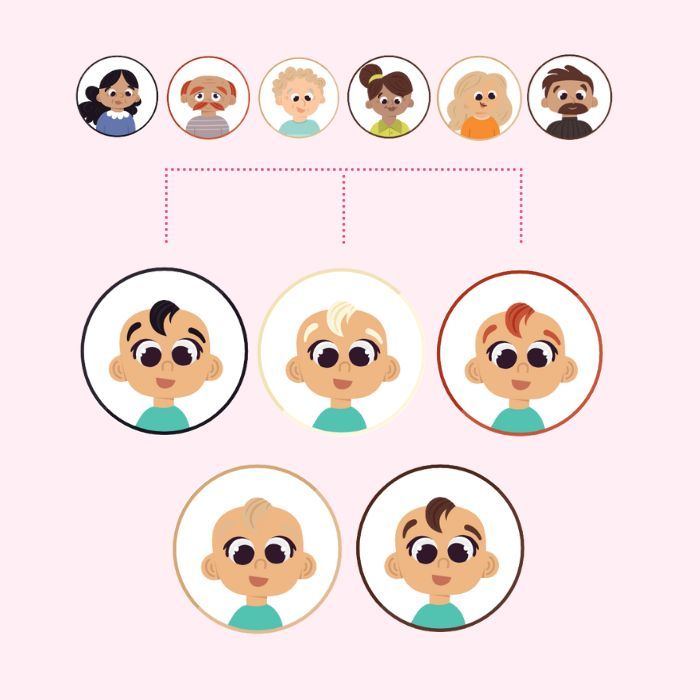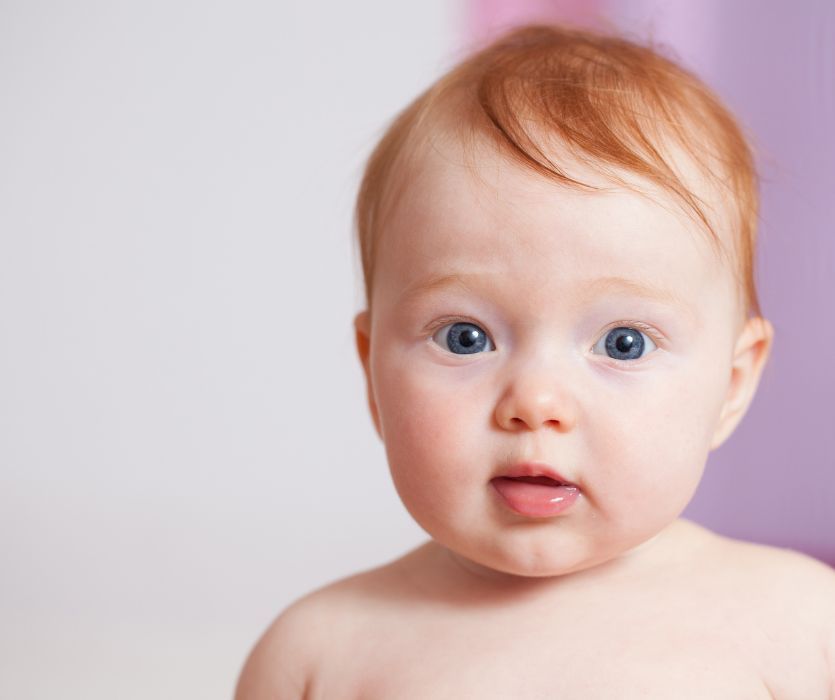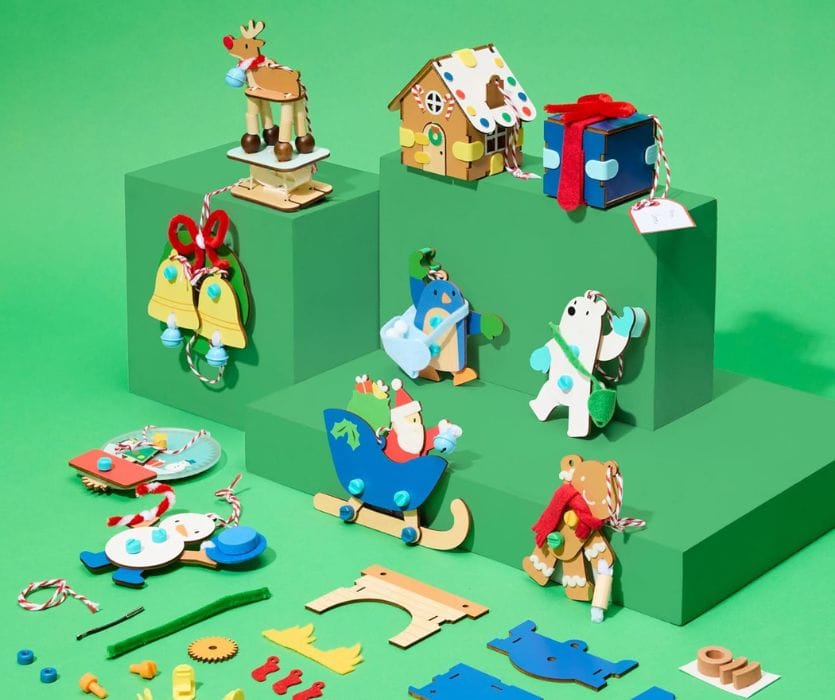Wondering what your baby will look after they finally get here is par for the course when you’re an expecting parent. While all physical traits are passed down through a complicated game of genetic chess, some are easier to predict than others. Predicting a baby's hair color is one characteristic where a relatively accurate, educated guess can be made.
Predicting Hair Color
For some, the big reveal will be pretty anticlimactic. Sure, you can always draw a genetic wildcard, but for the most part, if your entire family has one hair color, the odds suggest that your baby will come out with whatever the fam is rocking. It doesn’t take much to ripple the pond, though, which is where things like dominant and recessive genes, alleles, phenotypes, pigments, and blending come into play.
How is a Baby’s Hair Color Determined?
To answer that, we’re going to need a mini-genetics lesson. Each of our parents contributes portions of their DNA via their chromosomes that then become our own genetic code. Not everything they pass along is expressed, but we still have the ability to pass these traits on to our children.
Eye and hair color is an example of how the dominant and recessive alleles you and your partner are carrying around can combine to create unique traits, like dark hair, dimples, blue eyes, or even a widow’s peak - even when these traits aren’t expressed by either parent.
That all said, predicting a baby’s hair color is more complex than a mini-genetics lesson can explain, partly because hair color can blend, and the final color can change as your child ages.
A Note on Pigments
It’s also worth mentioning pheomelanin and eumelanin, which are melanin pigments responsible for coloring black, brown, and red hair.
Pheomelanin is responsible for red tones in hair, as well as the skin, lips, and even freckles. Eumelanin gets broken down even further into brown eumelanin and black eumelanin - each of which are responsible for the corresponding shade of brown or black hair. People who only have a little brown eumelanin have blond hair.
If there's some sort of genetic mutation or defect of the genes that produce melanin, albinism - where little to no melanin is deposited in the hair, skin, or iris - can result. There are several forms with varying severity, affecting about 1 in 18-20,000 people in the US.
Again - all of this is being simplified for the sake of brevity, but you get the jist.
How Does Hair Color Get Passed Down
Keeping in mind that determining hair color isn’t quite this easy, in general, here’s how these common scenarios play out between our dominant and recessive hair color genes:
Black hair: Black hair is both the most common hair color worldwide, and is typically the dominant trait. It is non-blending with lighter colors, meaning if you or your partner have black hair, odds are your offspring will have black hair.
Brown hair: Being brunette allows for a little more flexibility, but this is based off what unexpressed alleles both parents are carrying around, and how many shades of brown there are. In a blonde-brunette pairing, there is a chance for a blonde child, though the odds are more in favor of a brunette child. In a brunette-brunette pairing, your offspring will likely have a shade of brown. In a black-brunette pairing, the child will likely have black hair, but could end up with a shade of brown. Helpful, right? Genetics are weird.
Blonde hair: Blonde is a recessive trait, and a blonde-blonde pairing would result in blonde offspring.
Red hair: Red hair is a whole different ball game and is classified as an “incomplete dominance,” meaning it’s neither dominant nor recessive. Instead, when a baby receives a red allele from a parent, it blends with whatever allele it receives from the other parent. So, if baby gets a red allele from Mom and a blonde allele from Dad, it will be strawberry blonde. If instead of blonde from Dad, it gets brown, the baby will be auburn. A true redhead is a rare bird. Embrace them as such.
This is really just the tip of the iceberg, but you get the point.
WHEW! See?! Complicated. Furthering the confusion, sometimes hair color changes as the baby ages. So what color hair will your baby have? You might have a pretty good idea, or you might be in for a pretty fun surprise. This prediction tool is really just a fun way to dream up the different color possibilities.
So how did our baby hair color predictor work for you and your family?
Let us know in the comments!
Also check out:
Baby Eye Color Predictor
Ultimate List of 500+ Names for Grandparents
27 Amazing Old Images of Breastfeeding Throughout History






Leave a Comment